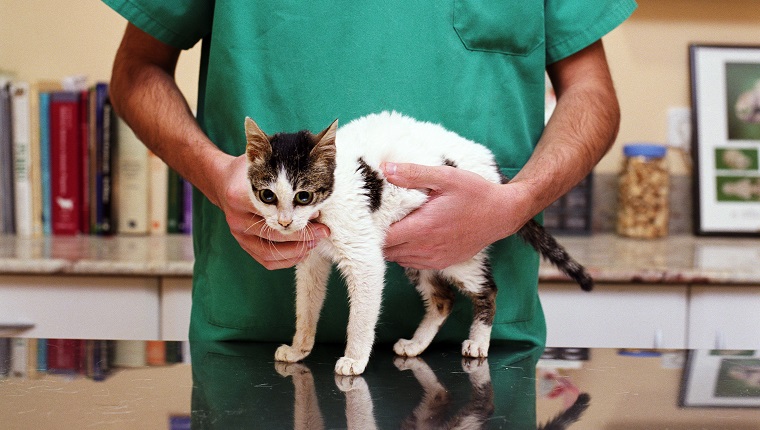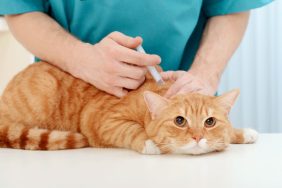Cerebellar hypoplasia in cats, sometimes colloquially known as wobbly cat syndrome, is a medical condition that results in a part of the brain known as the cerebellum being unable to develop fully. It can lead to a cat having coordination issues.
The condition most often occurs when a pregnant cat contracts the feline panleukopenia virus, also known as feline distemper, and transmits it to her kittens.
If you see signs that your cat might be suffering from wobbly cat syndrome, then you must consult your veterinarian for a proper diagnosis and course of treatment. Here’s what you should know about the symptoms, causes, and treatments of cerebellar hypoplasia in cats.
Symptoms Of Cerebellar Hypoplasia In Cats
Cerebellar hypoplasia in cats can result in a wide range of symptoms that often affect a cat’s coordination and balance. Some of the most common symptoms include:
- Body and limb tremors
- Swaying when walking
- Issues with balancing
- Head bobbing
- Difficulties judging distances
- Clumsiness
Causes Of Cerebellar Hypoplasia In Cats

The cause of cerebellar hypoplasia in cats is most often a pregnant cat passing the condition on to her kittens. This happens when the mother cat becomes infected with feline panleukopenia virus. The condition can affect any number of cats in a litter.
Some cases have also been speculated to arise due to exposure to environmental toxins, infections, and dietary deficiencies.
Veterinary Treatments
If you worry that your kitten is developing cerebellar hypoplasia, then your veterinarian will ask a detailed series of questions about their symptoms and their medical history. This will include questions about the birthing process.
Your vet will also want to carry out a full physical examination of your cat, including blood and urine tests.
Unfortunately, there is no current treatment for this condition. However, it does not usually become progressively worse as a kitten gets older, and many cats who develop it go on to live a normal life span.
In terms of day-to-day care, it can be helpful to limit your cat’s activity and movement so that they do not end up injuring themselves. Additionally, make sure all female cats receive their vaccination for feline panleukopenia before any potential pregnancy.
Has your cat developed cerebellar hypoplasia? What lifestyle changes have you made to keep them comfortable and living their best life? Tell us all about it in the comments below.









